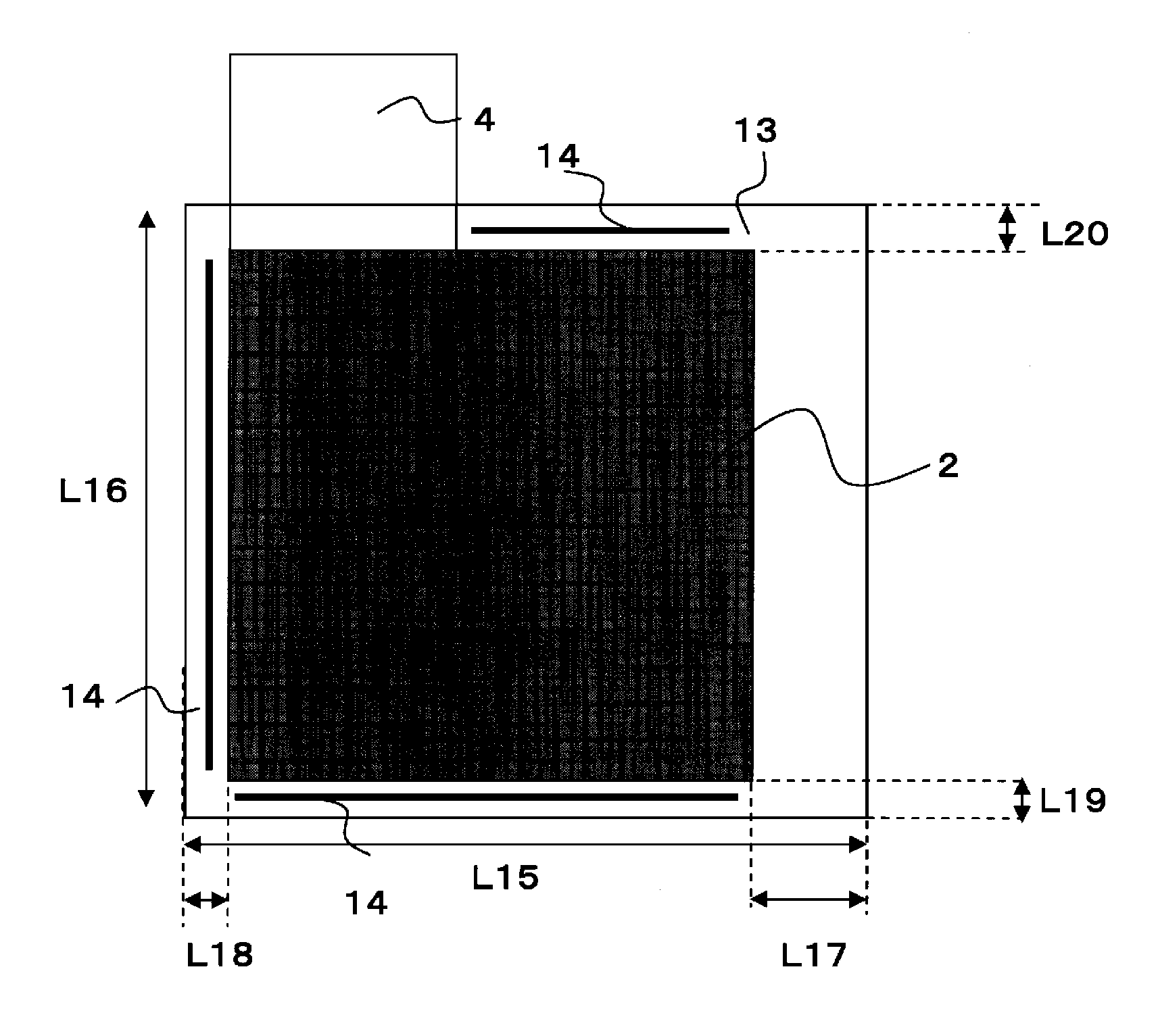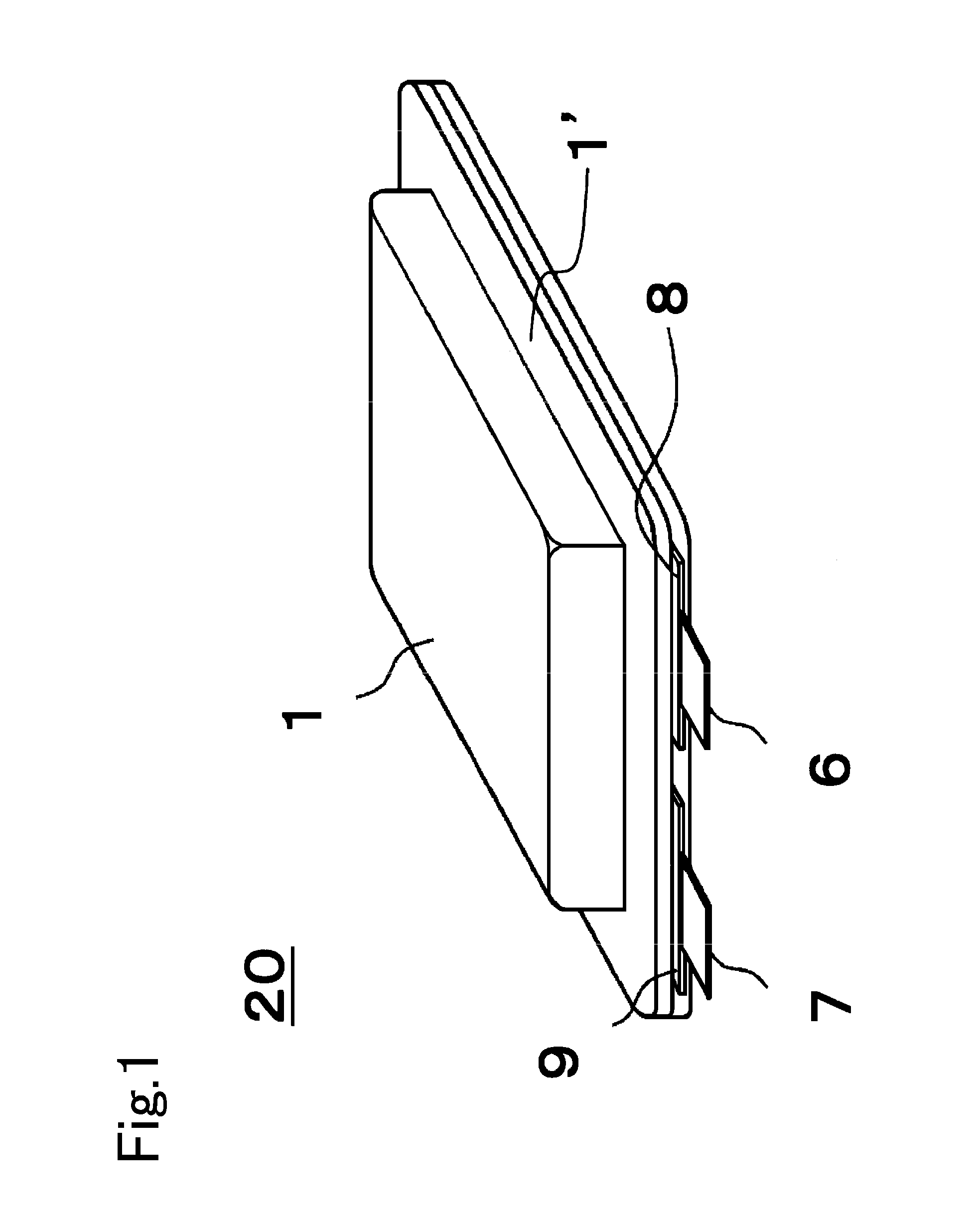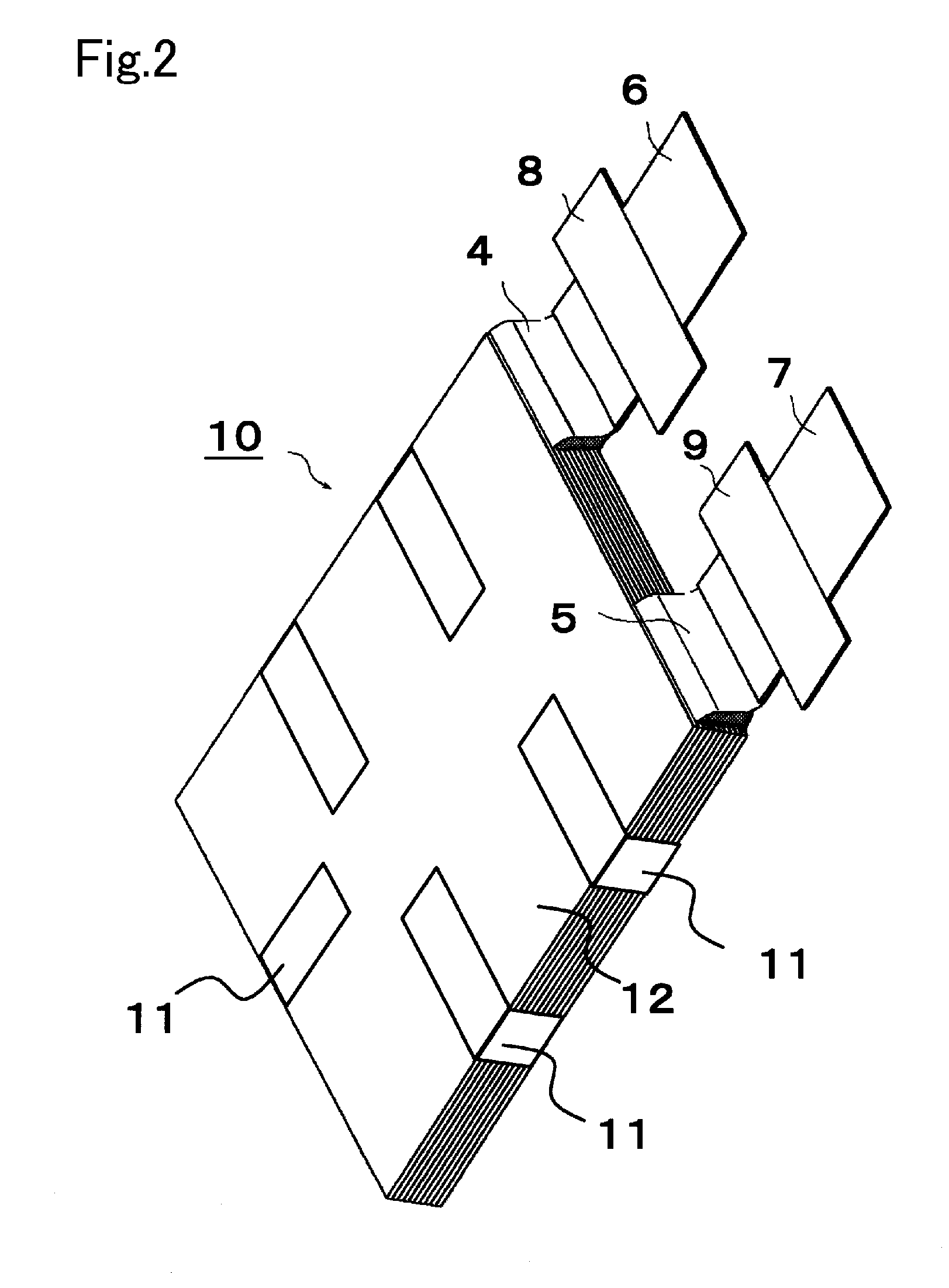Prismatic secondary battery
- Summary
- Abstract
- Description
- Claims
- Application Information
AI Technical Summary
Benefits of technology
Problems solved by technology
Method used
Image
Examples
example 1
Production of Positive Electrode Plate
[0051]Positive electrode slurry was prepared by mixing 90 mass % of LiCoO2 serving as positive electrode active material, 5 mass % of carbon black serving as a conductive material, 5 mass % of polyvinylidene fluoride serving as a binding agent, and N-methyl-2-pyrrolidone (NMP) solution serving as a solvent. Then, the positive electrode slurry was applied to both surfaces of an aluminum foil (a thickness of 15 μm) serving as a positive electrode collector. Thereafter, the solvent was dried, and the resultant product was compressed by a roller to a thickness of 0.1 mm and then, cut into the positive electrode plate 2 to have a width (L1) of 85 mm and a height (L2) of 85 mm and such that the aluminum foil having no positive electrode active material layer formed thereon (a width L3 of 30 mm and a height L4 of 20 mm) protruded from one side of the positive electrode plate 2 to serve as the positive electrode collector tab 4 (see FIG. 3A).
Production ...
PUM
 Login to View More
Login to View More Abstract
Description
Claims
Application Information
 Login to View More
Login to View More - R&D
- Intellectual Property
- Life Sciences
- Materials
- Tech Scout
- Unparalleled Data Quality
- Higher Quality Content
- 60% Fewer Hallucinations
Browse by: Latest US Patents, China's latest patents, Technical Efficacy Thesaurus, Application Domain, Technology Topic, Popular Technical Reports.
© 2025 PatSnap. All rights reserved.Legal|Privacy policy|Modern Slavery Act Transparency Statement|Sitemap|About US| Contact US: help@patsnap.com



